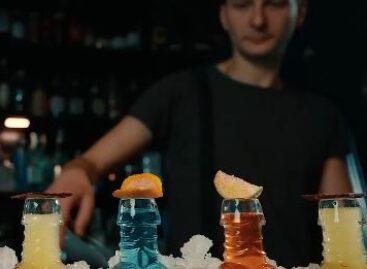Magazine: Deboned fish market
In the last 20 years per capita annual fish consumption doubled in Hungary and reached 5.3kg. However, this is still much less than the 20kg world average. Experts predict that fish consumption will continue to grow in Hungary. Within the framework of the Fisheries Operative Programme, HUF 15.5 billion is available for technological development in the fisheries sector from 2016. The government also tries to motivate consumers for buying more fish and restaurant owners are doing the same.
According to Péter Müller, managing director of Szarvas-Fish Kft., in and around Budapest and in bigger cities consumers can choose from a wider range of fish products. In certain rural regions fish isn’t available to consumers at all. One way to solve this problem could be mobile fish shops: the company has a van that sells fish in and around Szarvas. If the right conditions were created, consumption of Hungarian fish could increase by 1-1.5kg/person a year in just 4-5 years’ time.
András Béki, sourcing manager of Rozmár Wholesale opines that the positive fish consumption trends of recent years are primarily rooted in the fish eating experience that young adults and middle-aged consumers – basically those born after 1990 – acquired during their travels abroad; they are more likely to raise their children in a way that they give fish a chance.
Attila Sárközi, sales director of FRoSTA in Hungary told our magazine that the Horeca sector played a great part in the fish consumption growth of the last few years. From popular fish varieties the biggest negative changed occurred in the consumption of pangasius: after the exponential growth of recent years, it suffered a rather big popularity loss. Gyula Sándor, managing director of Delforg Kft. emphasised that retail chains are fighting for customers by lowering their prices all the time, as the purchasing power of Hungarian consumers is low. It is needless to say, that this trend also affects the price retail chains pay to suppliers. Zoltán Orosz, key account manager of Hering Trade painted a rosier picture: Today, when people don’t really have time for anything, consumers want fish products which have been prepared for cooking. The sector needs to invest in technological development in order to be able to meet this demand.
One of the big questions in connection with fish is whether it is expensive or not. Well, our experts said that quality fish is expensive everywhere. There is quite a lot of poor quality fish product available in Hungarian shops. One thing is for sure: fish products are cheaper in Hungary than in Western Europe. Still, consumers with a low income can’t really afford putting fish on the dinner table. More expensive fish products are exclusively purchased by well-off consumers. One could perhaps say that fish prices are neither low nor high, they are realistic in Hungary. Very cheap fish filet products cost HUF 800-900 in shops – typically they are available in 800g packaging. Experts say that fair quality products can’t be offered for less than HUF 1,200-1,300 per pack. Before the fierce price competition started, fish filet was available for HUF 1,500-1,600/kg and nobody was complaining about their quality.
Mr Müller informed that carp is the most popular freshwater fish, but consumers also purchase African catfish often and trout is also popular. From saltwater fish varieties salmon is the No.1 choice. Demand is going in the direction of highly processed, ready-to-cook products. 95 percent of the company’s products are sold processed, with the share of filet products increasing. Mr Béki talked to us about the success story of pangasius: it isn’t fat, it doesn’t have a strong smell and it contains few bones. The new hit product can be freshwater tilapia. Mr Orosz told our magazine that world trends prevail in the Hungarian market as well, only at a lower scale. Most new products come from abroad and consumers prefer perfectly prepared products. Mr Sárközi talked to us about the importance of sustainability: as fish are disappearing from the oceans, prices will inevitably rise. FRoSTA is making great efforts to help solve this problem, e.g. their products available in retail are certified to be sustainable (MSC certification). The proportion of the company’s MSC-certified products is growing in the Horeca segment as well.
Mr Sándor’s view is that in the last 10-15 years the change was the biggest in the culinary sector. For many hotels and restaurants quality is more important than price. Just for comparison: while in retail fish that costs more than HUF 1,000/kg can hardly be sold, in the culinary sector the price is often four times bigger. Mr Béki added that the best Hungarian restaurants employ chefs who try to surprise guests with new dishes. In spite of the fact that the popularity of fish has grown in the last 20 years, it is still those chefs which have acquired work experience abroad who prepare fish dishes more often. Mr Müller’s view is that if there are good ingredients, great fish dishes can be cooked. More and more fish dishes appear on the menu cards of restaurants also because of the current health trend. A growing number of street food joints also serve fish, popularising it among young people. Mr Orosz concluded that fish is served in basically all restaurants, but few of them make an extra effort with it.
Related news
Related news
NGM: half of the amount received on the SZÉP card can be used for home renovation from 2025
From next year, half of the amount received on the…
Read more >First We Feast studio, which produces Hot Ones, has been sold – George Soros’ company is among the new owners
Buzzfeed has sold its First We Feast studio, which produces…
Read more >(HU) Kemény leánybúcsúk kelléke – A nap videója
Sorry, this entry is only available in HU.
Read more >





